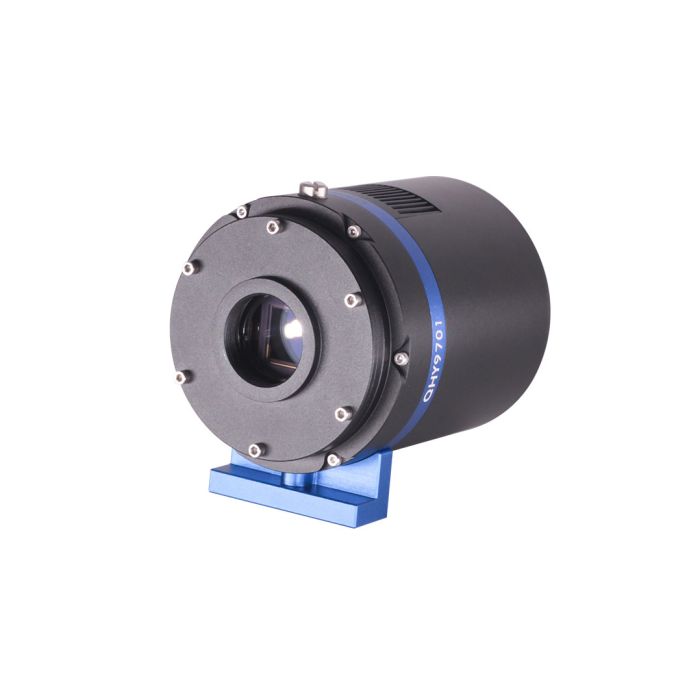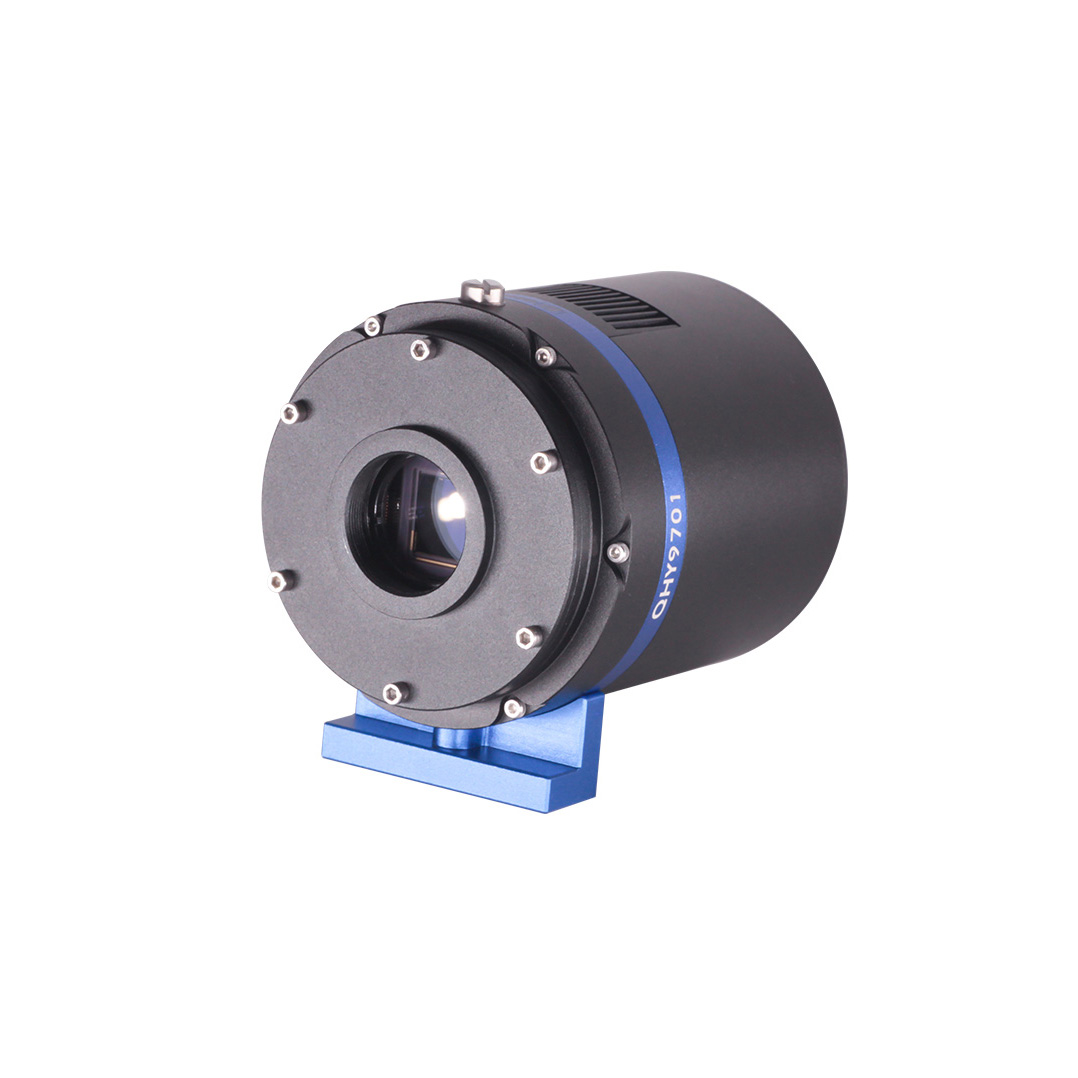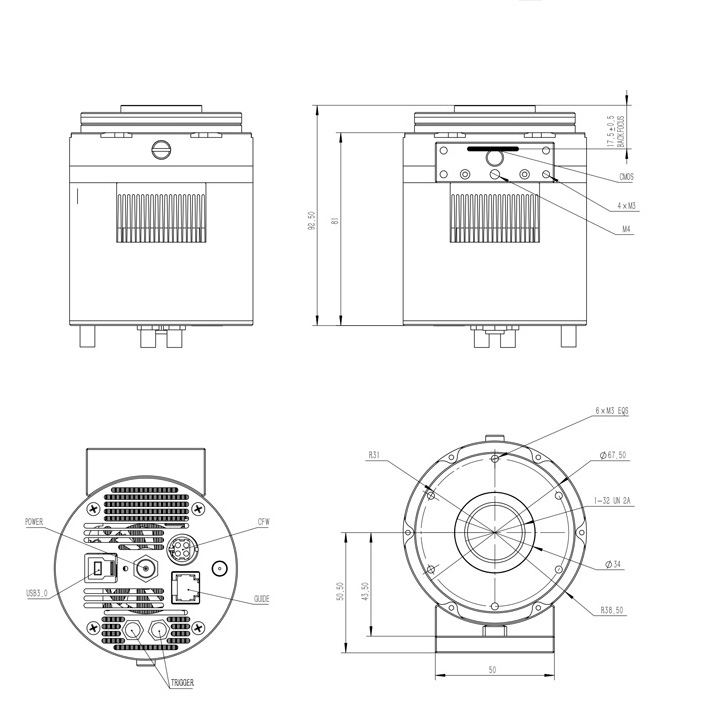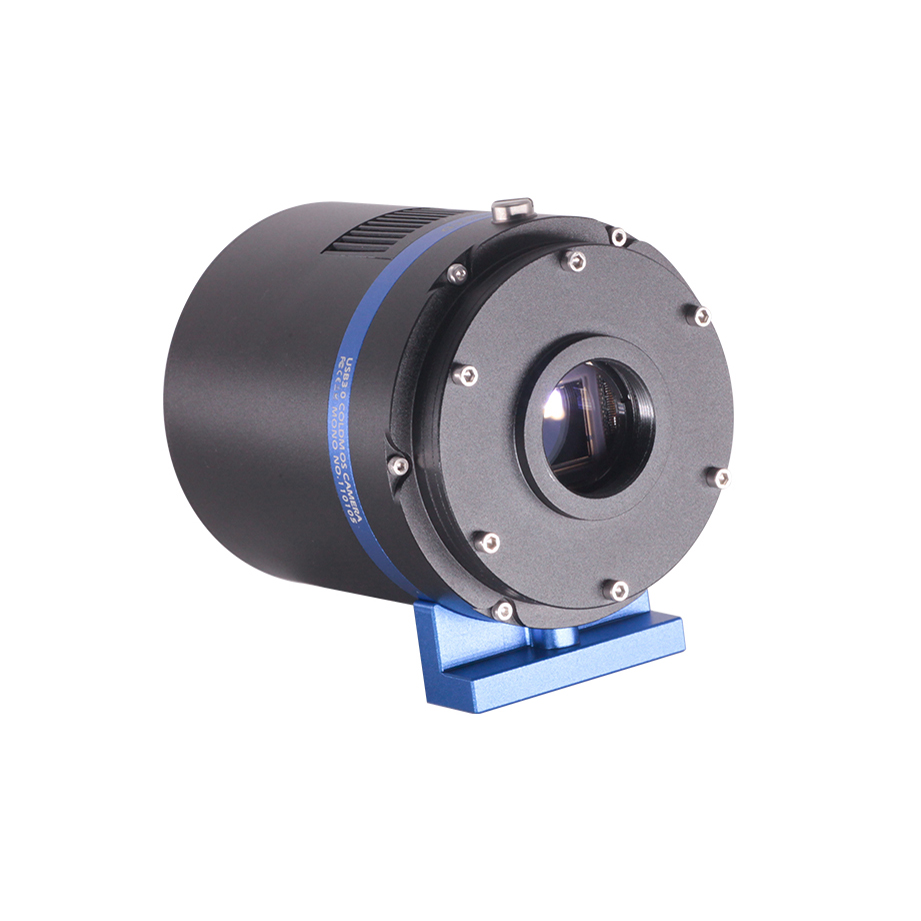QHY QHY9701 Cooled Mono Scientific Camera
QHY CMOS Scientific Cameras for the Ultimate in Imaging Performance
QHYCCD Scientific Cameras offer the latest technology in scientific imaging at reasonable prices. Scientific CMOS image sensors offer extremely low noise, rapid frame rates, wide dynamic range, high quantum efficiency, high resolution, and a large field of view simultaneously in one image. In this sense, while QHYCCD cameras made for astronomy clearly fit the definition of scientific cameras, we differentiate our scientific camera models based on additional features not found on similar models used for astro-imaging.
QHYCCD Scientific Cameras not only exhibit extremely low noise, high quantum efficiency and other scientific CMOS characteristics, but also offer large area, high-resolution sensors, SWIR sensors, polarized light sensors, GPS enabled timing, external triggers, field programmable gate arrays, a 2x10GB fiber optic computer interface and water cooling options.
QHY9701 is a cooled scientific CMOS camera with GSENSE9701 back illuminated sCMOS sensor. The CMOS has a very wide spectral response. With characteristics such as large pixels, ultra-wide spectrum and low noise, it is suitable for high-end microscopy, micro-optics, biofluorescence and other scientific research fields.
The QHY9701 Mono Camera with GSENSE9701 BSI Sensor
The QHY 9701 monochrome camera has 89% peak QE at 610nm. The high, wide response from NIR to UV makes this a perfect camera for spectrum analysis and spectrum imaging systems. The QHY9701 is also an ideal scientific CMOS camera for Fluorescence imaging. With read noise as low as 0.85e-, this camera can capture photons from very dim objects.
A back-illuminated CMOS sensor improves full well capacity. In the back-illuminated sensor the light is allowed to enter the photosensitive surface from the reverse side. In this case the sensor’s embedded wiring structure is below the photosensitive layer. As a result, more incoming photons strike the photosensitive layer and more electrons are generated and captured in the pixel well. This ratio of photon to electron production is called quantum efficiency. The higher the quantum efficiency the more efficient the sensor is at converting photons to electrons and hence the more sensitive the sensor is to capturing an image of something dim.





